Do you have a question about the Yamaha SRE203 and is the answer not in the manual?
Covers specifications, notices, environmental issues, battery handling, and name plate location.
Key information regarding FCC compliance, unit modification, and cable usage.
Essential safety guidelines to prevent damage and ensure proper operation.
Explanation of GM System Level 1, Stereo Sampled Piano, and Yamaha Education Suite 5 logos.
List of items included in the product packaging.
Information on using AC adapter or batteries for power.
Instructions for connecting and using the AC adapter.
Instructions for installing and replacing batteries.
How to connect headphones and use the output jack, plus foot switch connection.
How to connect to other MIDI instruments or computers.
Procedure for powering the instrument on and off.
Identification and function of controls on the front panel.
Identification and function of connections on the rear panel.
Learn to select and play different instrument voices and drum kits.
Explore unique sound effects available on the instrument.
How to use the metronome for practice, including tempo and volume.
How to select and listen to the instrument's built-in songs.
Learn to play with automatic accompaniment rhythms and styles.
Learn to turn the instrument on/off, adjust volume, and use basic controls like START/STOP.
Understanding the instrument's LCD display, including notations, volume indicators, and settings.
Introduction to the educational features for learning songs.
Learn song melodies by listening and observing.
Practice playing notes in time with the accompaniment.
Practice playing correct notes, with the song waiting for input.
How to change the instrument voice used for song playback.
Adjusting song volume and muting individual tracks.
Repeating specific song sections for focused practice.
Enhancing sound with reverb effects and selecting reverb types.
Applying a fixed sustain effect to keyboard voices.
Adjusting the keyboard split point for dual voice play.
Changing the overall pitch and fine-tuning the instrument's tuning.
Automatically selects appropriate voices for selected songs or styles.
Adjusting tempo for songs/styles and main voice volume/octave.
Various methods to start and stop automatic accompaniment styles.
Using Intro, Main, Fill-in, and Ending sections to vary arrangements.
Simple methods for playing chords using one, two, or three fingers.
Playing chords with normal fingerings for automatic accompaniment.
Looking up chords and understanding different chord types.
How to access and change various instrument settings.
A comprehensive list of available function settings and their descriptions.
Explanation of MIDI technology and its role in music communication.
Overview of what can be achieved using MIDI connections.
How to send and receive performance data with other devices.
Controlling whether the instrument's internal tone generator responds to key presses.
Synchronizing the instrument with an external MIDI clock.
Sending panel settings to external devices.
Information on the maximum number of notes that can sound simultaneously.
A list of available instrument voices and their corresponding numbers.
Details on the different reverb effects available.
Overview of MIDI messages related to effects.
Covers specifications, notices, environmental issues, battery handling, and name plate location.
Key information regarding FCC compliance, unit modification, and cable usage.
Essential safety guidelines to prevent damage and ensure proper operation.
Explanation of GM System Level 1, Stereo Sampled Piano, and Yamaha Education Suite 5 logos.
List of items included in the product packaging.
Information on using AC adapter or batteries for power.
Instructions for connecting and using the AC adapter.
Instructions for installing and replacing batteries.
How to connect headphones and use the output jack, plus foot switch connection.
How to connect to other MIDI instruments or computers.
Procedure for powering the instrument on and off.
Identification and function of controls on the front panel.
Identification and function of connections on the rear panel.
Learn to select and play different instrument voices and drum kits.
Explore unique sound effects available on the instrument.
How to use the metronome for practice, including tempo and volume.
How to select and listen to the instrument's built-in songs.
Learn to play with automatic accompaniment rhythms and styles.
Learn to turn the instrument on/off, adjust volume, and use basic controls like START/STOP.
Understanding the instrument's LCD display, including notations, volume indicators, and settings.
Introduction to the educational features for learning songs.
Learn song melodies by listening and observing.
Practice playing notes in time with the accompaniment.
Practice playing correct notes, with the song waiting for input.
How to change the instrument voice used for song playback.
Adjusting song volume and muting individual tracks.
Repeating specific song sections for focused practice.
Enhancing sound with reverb effects and selecting reverb types.
Applying a fixed sustain effect to keyboard voices.
Adjusting the keyboard split point for dual voice play.
Changing the overall pitch and fine-tuning the instrument's tuning.
Automatically selects appropriate voices for selected songs or styles.
Adjusting tempo for songs/styles and main voice volume/octave.
Various methods to start and stop automatic accompaniment styles.
Using Intro, Main, Fill-in, and Ending sections to vary arrangements.
Simple methods for playing chords using one, two, or three fingers.
Playing chords with normal fingerings for automatic accompaniment.
Looking up chords and understanding different chord types.
How to access and change various instrument settings.
A comprehensive list of available function settings and their descriptions.
Explanation of MIDI technology and its role in music communication.
Overview of what can be achieved using MIDI connections.
How to send and receive performance data with other devices.
Controlling whether the instrument's internal tone generator responds to key presses.
Synchronizing the instrument with an external MIDI clock.
Sending panel settings to external devices.
Information on the maximum number of notes that can sound simultaneously.
A list of available instrument voices and their corresponding numbers.
Details on the different reverb effects available.
Overview of MIDI messages related to effects.
| Brand | Yamaha |
|---|---|
| Model | SRE203 |
| Number of Keys | 61 |
| Touch Sensitivity | Yes |
| Polyphony | 32 |
| Effects | Reverb, Chorus |
| Transpose | Yes |
| Tuning | Yes |
| Metronome | Yes |
| Display | LCD |
| Connections | USB |
| Power Supply | AC Adapter or Batteries |
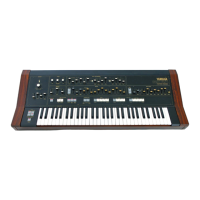
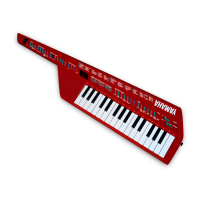
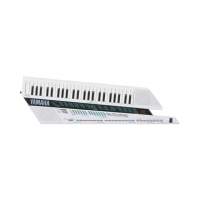
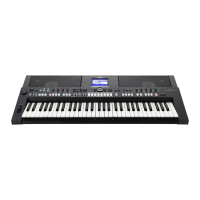


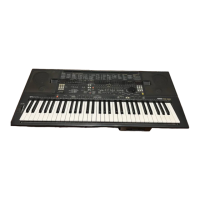

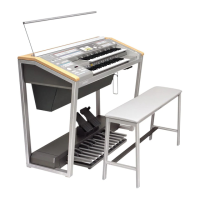
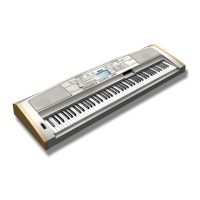

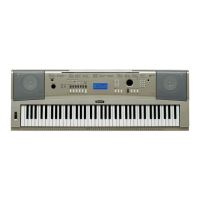
